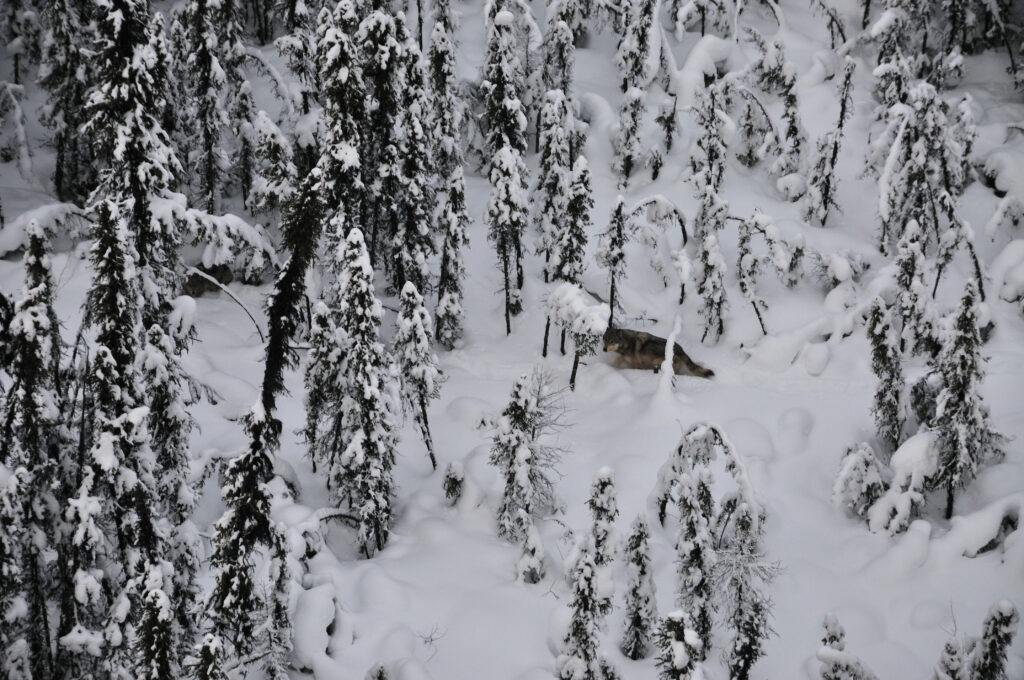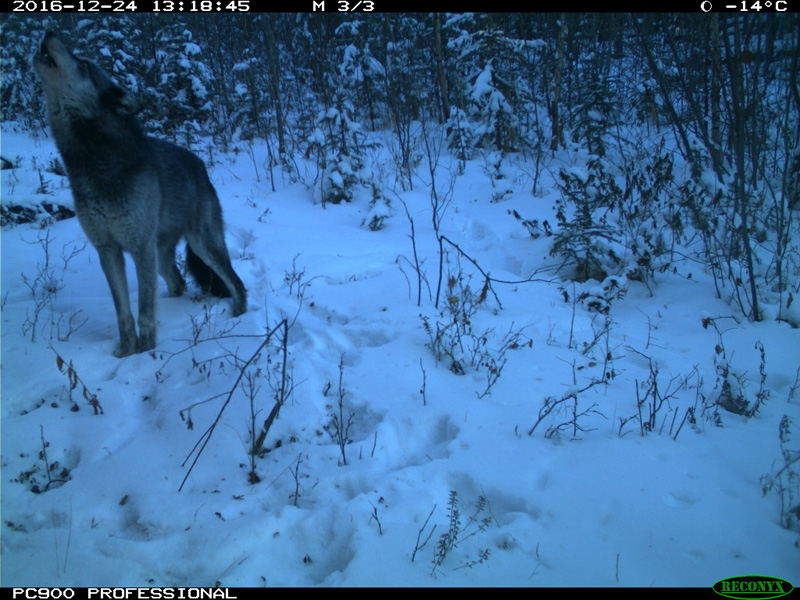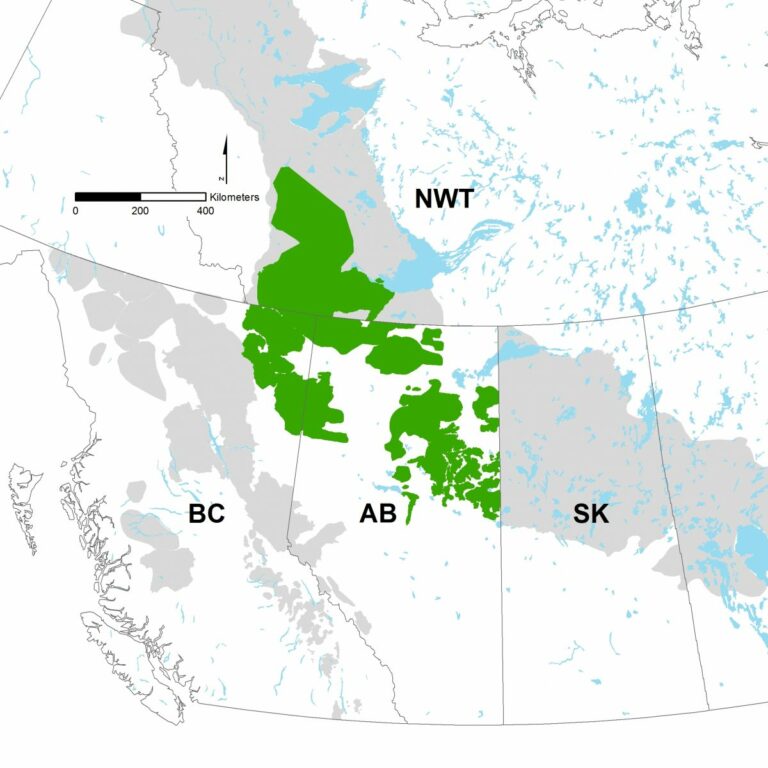Adaptive management and recovery of caribou requires understanding the drivers of population dynamics.

To do that, it is necessary to estimate the abundance of caribou and the species they interest act with—such as wolves, cougars, bears, moose, and deer. We work on a variety of projects that use a variety of classic techniques such as aerial surveys as well as new technological approaches to estimate large mammal abundance.
1. Developing methods to count boreal caribou
In partnership with the Government of the Northwest Territories, we refined approaches to estimate the distribution and abundance of boreal caribou, which are notoriously difficult to count. The report can be found here.
2. Using cameras to estimate animal density
InnoTech Alberta is developing and evaluating ways to generate reliable density estimates for caribou, moose, black bears, and wolves using camera detections in the Alberta Oil Sands Area. This program incorporates camera detection histories and/or telemetry movement data for a marked (i.e., collared) subset of individuals to improve the accuracy and precision of density estimates. In addition, the program compares the camera-based density estimates with independent estimates of density in the region generated by complementary projects.
This program will develop recommendations for using camera trapping and spatial capture-recapture methods to reliably estimate densities of large mammal species in future survey and monitoring efforts to support caribou management in Alberta’s Oil Sands Area. Reliable density estimates are important in order to detect changes in mammal populations within and between areas where different land management treatments designed to test caribou recovery have been applied.

